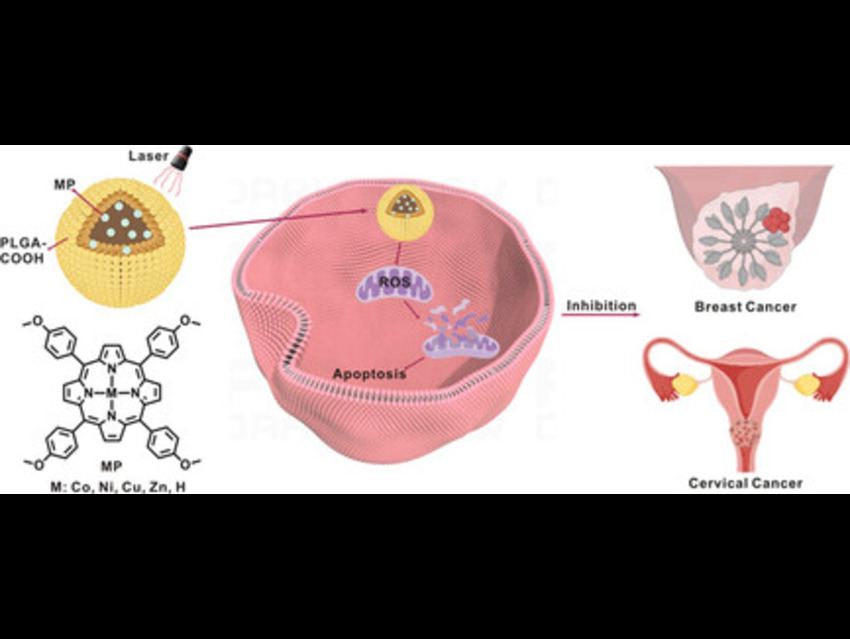Current photodynamic therapy (PDT) treatments for cancer often rely on metal-based photosensitizers, which can be toxic and unstable. This research aims to develop a safer, more effective alternative using non-metal compounds to treat breast and cervical cancer.
Researchers Jing Cao, Lanzhou University, Lanzhou, China, Jun Hai, Lanzhou Institute of Chemical Physics, Chinese Academy of Sciences (CAS), Lanzhou, China, and colleagues have developed a new class of light-activated cancer-fighting agents by synthesizing methoxy-substituted porphyrin molecules (H2P). These molecules were assembled into nanoparticles through a self-assembly technique, designed to be water-soluble and responsive to light. When activated by light (660 nm laser), the nanoparticles generate reactive oxygen species (ROS) that are capable of damaging cancer cells.
The efficacy of H2P-based PDT was investigated in vitro models of breast cancer using 4T1 cell lines and cervical cancer using HeLa cell lines. Results demonstrated that this treatment induces significant apoptosis in 4T1 cancer cells by disrupting mitochondrial function. Additional studies on HeLa cells further confirmed the therapeutic potential of H2P-based PDT, highlighting its strong tumor suppression activity.
To validate the antitumor effects of H2P-based PDT, researchers utilized 4T1 tumor mouse models and conducted subcutaneous tumor formation experiments and studied its underlying mechanisms. These findings contribute comprehensive evidence for its clinical application. Importantly, the treatment also demonstrated good biocompatibility, positioning it as a promising candidate for cancer therapy.
This work paves the way for metal-free PDT treatments that are safer and more accessible. Future directions include testing in clinical trials, exploring combinations with other therapies, and adapting the technology for different types of cancer.
- Nonmetal Methoxy-Porphyrin Nanophotosensitizers: An Antitumor Agent for Photodynamic Therapy against Breast Cancer and Cervical Cancer
Xuehan Bi, Xi Chen, Hongli Li, Zihan Fang, Jing Cao, Jun Hai
ChemBioChem 2025
https://doi.org/10.1002/cbic.202500154




